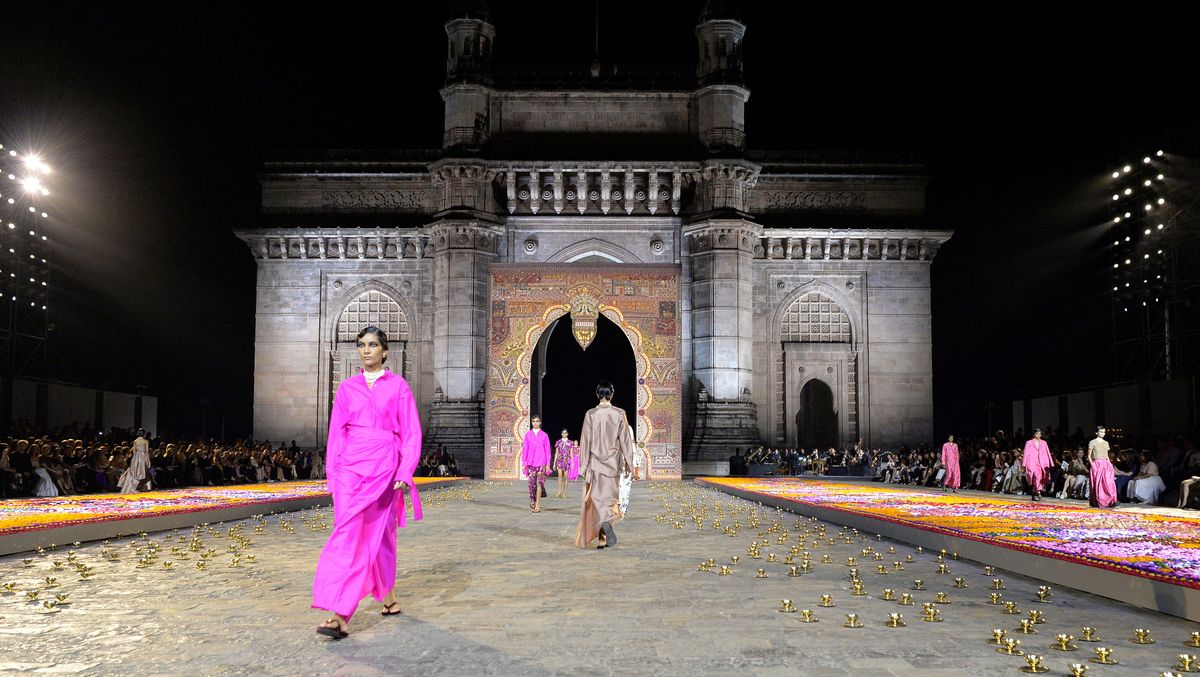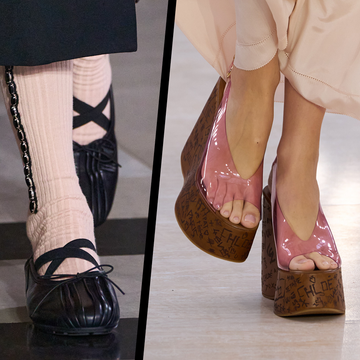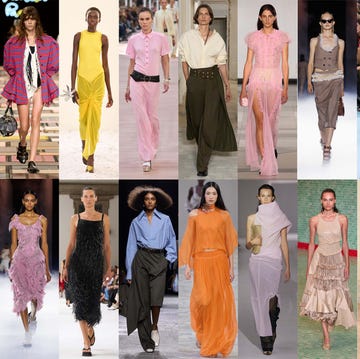Dior launched fashion’s destination show schedule with a spectacular nighttime presentation in Kyoto, Japan. Held during cherry blossom season in the ancient To-ji Temple gardens, with models walking a gravel runway between spotlit trees amidst a cascade of falling petals, it was so photogenic that you wonder how anyone else could hope to compete. They will try, of course: over the next few weeks, Chanel will show at Lake Como, Louis Vuitton in Avignon, Gucci in Florence, Max Mara in Naples and Dior (again) in Rome. Elaborate stagings in far flung destinations are still a trend. This wasn’t a cruise collection, though, but pre-fall – available in stores next week, not usually shown and a way to flex status when you’re a pre-eminent luxury brand with a global customer base to satisfy. Confirming its importance, Delphine Arnault sat front row, alongside Lily James, Sonam Kapoor, Pretty Yende and an impressive list of local VIPs.
Dior has a long history with Japan: though he never visited the country, Christian Dior was captivated by its culture and became the first Western couturier to offer his designs there in 1953. Every other creative director at the house – from Marc Bohan to John Galliano, Raf Simons to Kim Jones – has followed suit. For Maria Grazia Chiuri, it was an opportunity to add to this dialogue, paying homage to Mr Dior with two reworked outfits from a 1954 collection that used hand-woven silks by Tatsumura Textiles in Kyoto, a specialist atelier which still employs the 90-year-old artisan who worked on the originals. Though it honoured tradition, this was an entirely modern collection, combining a seductive Japanese minimalism with floral prints and Chiuri’s signature utilitarian chic. "I’ve been researching the beauty of the kimono and the philosophy behind its shape. It’s the body that defines it," she said at a backstage preview. "In Western fashion, it’s often the opposite— the body is expected to conform to the garment."
This translated to a collection so beautifully detailed that it felt almost like couture: cherry blossoms were hand-embroidered onto cashmere coats and printed onto diaphanous silks, while traditional dying techniques transformed denim. Chiuri’s mission since she became Dior’s first female creative director nine years ago has been to loosen up the house’s vision of femininity – "women move in completely different ways today from how they did in the 1940s," she says – and this was a further deconstruction of Dior tailoring, turning the jacket into a kimono shape and throwing it over jeans. Naturally everything was worn with flat shoes. The ease was apparent but so too the elegance.
Mr Dior was a revolutionary, turning his couture house into a truly global brand, but so too is Maria Grazia Chiuri: a woman always designing with other women in mind. This was a stellar performance.





















